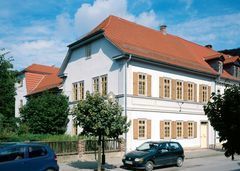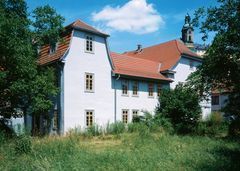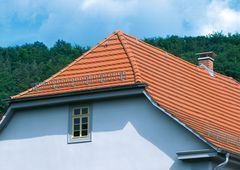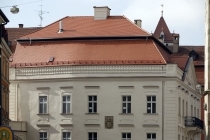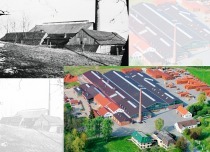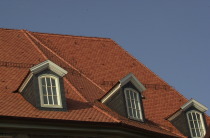Restoration of Schillerhaus in Rudolstadt
It was September 7, 1788, and summer was drawing to an end, when Friedrich von Schiller and Johann Wolfgang von Goethe met each other here in this very house for the very first time – and had a rather chilly exchange. And to this very day, this building on Schillerstrasse in Schiller City (better known as Rudolstadt), Thuringia, is called Schillerhaus, and it is just now being thoroughly (and expensively) renovated. And since it is a heritage-listed structure, sensibility is in order. Germany's leading producer of clay roof tiles, Creaton AG, whose biggest production facility is located in Thuringia, supplied the plain tiles for a new roof in a historical ambience. Coincidentally, the trade name of those tiles happens to be "Ambiente".
Rehabilitation of the vintage-1720 structure includes modifications that are subject to landmark-preservation order, so the historic substance will be preserved despite modernization. When it came to the roof, a double layer, or "crown cover", of beaver-tail plain tiles was chosen to produce a regular, half-staggered pattern. To match the sheen of the revamped historical ambience, clay tile producer Creaton delivered 12,000 "Ambiente" brushed-finish plain tiles. "For heritage-protection reasons, no other roof tiles could even be considered. We chose Creaton's "Ambiente" because they go well with the rest of the house, the surrounding landscape and our own quality aspirations," explains Hans Pensold, the roofing contractor from Oppurg who did all the work.
The hugely successful "Ambiente" product line includes special shapes ranging from straight-cut to hexagonal and on to long-point cut ("church mouse") and any number of variations. The segment cut ("bobtail") was selected for the house in Rudolstadt. Now, the roof landscape of the Schillerhaus is adorned by brushed, natural-red plain tiles.
Indeed, with "Ambiente", Creaton has made cultural history, particularly in eastern Germany. These same tiles can be found on a large number of time-honoured structures, including palaces in Leipzig and Weimar, the theological seminary in Jena, and the "Mauritianum" museum of natural history in Altenburg. In all these instances, segmental plain tiles were employed. Of course, that does not mean that classical plain tiles are reserved exclusively for historical roofs. "Ambiente" is characterized by an inherent individuality that can be found on the roofs of pretty little single-family homes just as well as on those of representative corporate headquarter buildings.
Four roof shapes on a single building
The roofing work was a major challenge, and it took Oppurg-based Pensold Roofing a good four weeks to do. Schillerhaus, namely, is anything but a homogeneous structure with a plain & simple roof. The complex has a gable roof, a baroque mansard roof with dormers, a gambrel roof and a shed roof. This literally nested roof landscape is carried by an elaborate wooden understructure. The carpenters' job was to preserve and, where necessary, carefully repair the centuries-old construction. The roof valleys were particularly complicated, because they adjoined - and therefore had to accommodate - a modern new steel & glass roof structure over the courtyard.
"Nothing happened here for 200 years," reports Architect Dieter Zapfe from Rudolstadt's Planning Architects Bureau Danz & Zapfe. Not before or after 1871, not after 1918, not even after 1945. It was not until 5 years after the Fall of the Berlin Wall that the building's restoration was actually initiated. "Creaton ensured that the roof tiles would preserve and help assert the building's inherent character. The plain tiles are intended to take on an aged appearance. That is why we dispensed with a glaze. Sooner or later, weather exposure will make the north side look different than, say, the west side. But the way Schillerhaus looks now is just what Rudolstadt has been waiting for for the last 200 years."
This house, where poet-prince Friedrich Schiller once spent several months, is long since a museum. By the way, Schiller's nobility title "von" was only conferred in 1802.

